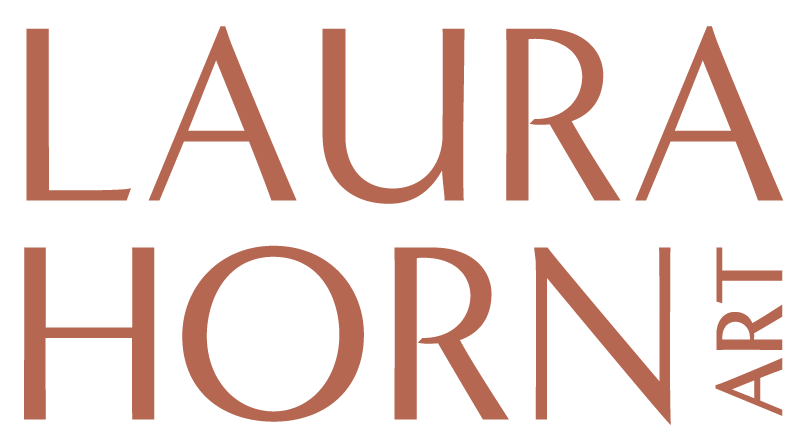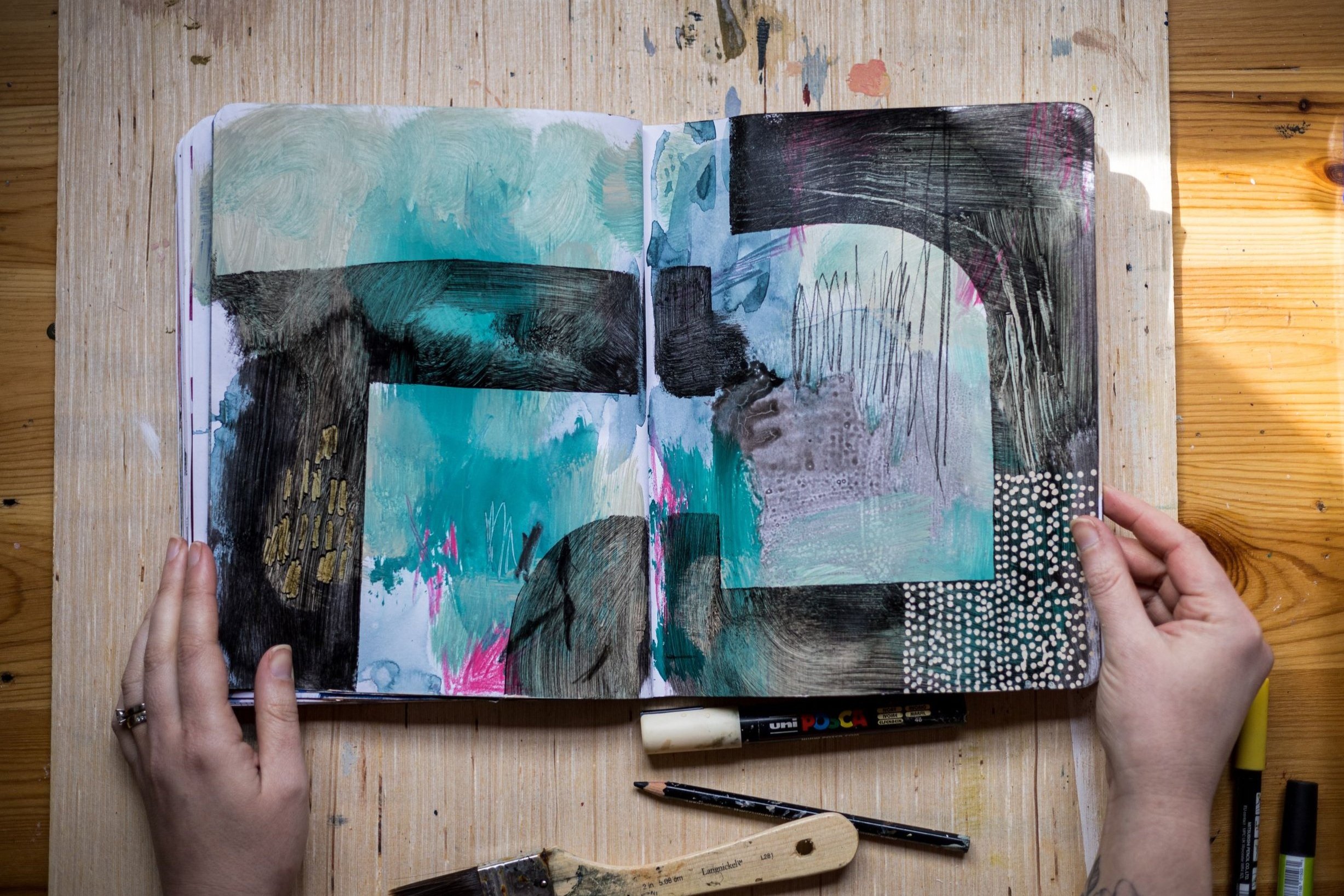5 Ways to Unlock Creative Flow and Ignite Your Art Practice!
Maintaining a consistent art practice is challenging. Some days everything flows, while other days it’s hard to even make a mark. Being able to navigate these two very different states is essential for artists. While you may not be able to eliminate creative blocks completely, there are things that you can do to get your mojo going, even on those days when creativity feels really hard.
To help with this, today I am sharing 5 ways to unlock your creative flow.
Make music your friend
There’s something magical about the way that music combines with paint. While at times I enjoy listening to podcasts or working in silence, when I feel stuck, music is my go-to. There are so many different styles of music, and each one hits differently. An energetic, upbeat playlist can get you moving and working with big, bold brushstrokes, while a quieter playlist might encourage smaller movements and calming colours.
Making a new playlist can be a great way to motivate yourself to paint. I often get excited about the possibilities that might flow from listening to new songs while I work. So my tip here is to start making playlists with painting in mind! If you want to check out mine for inspiration, click here.
Environment = excitement
Another condition that can make your painting experience more positive is having all of your art supplies stocked up and accessible. There’s nothing more frustrating than feeling fired up to paint, only to discover that you’ve run out of your favourite colour. If you are in a lower-energy creative phase, this is the perfect time to check in on your supplies and review your space. Something as simple as re-positioning your desk, finding new storage solutions, or changing up your inspiration can do wonders.
Of course, all artists work differently, and a big part of this process is figuring out what supports you best. Some artists enjoy a clean space, while other artists love having an abundance of supplies and inspiration around them.
But you don't want to spend too much time on this. Remember, the conditions don’t have to be perfect. A few small tweaks are likely all you need to rewire your creativity and get you excited to start.
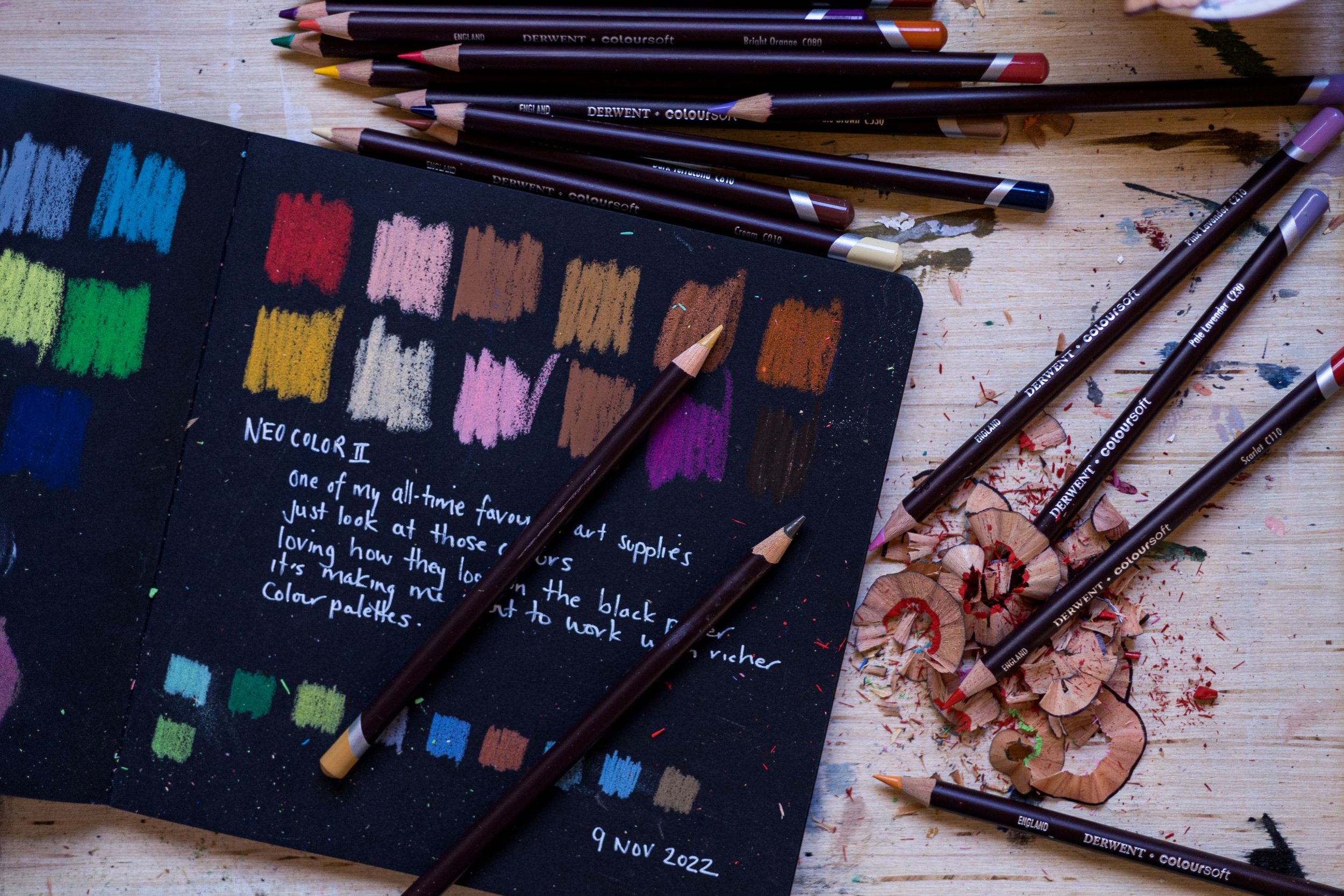
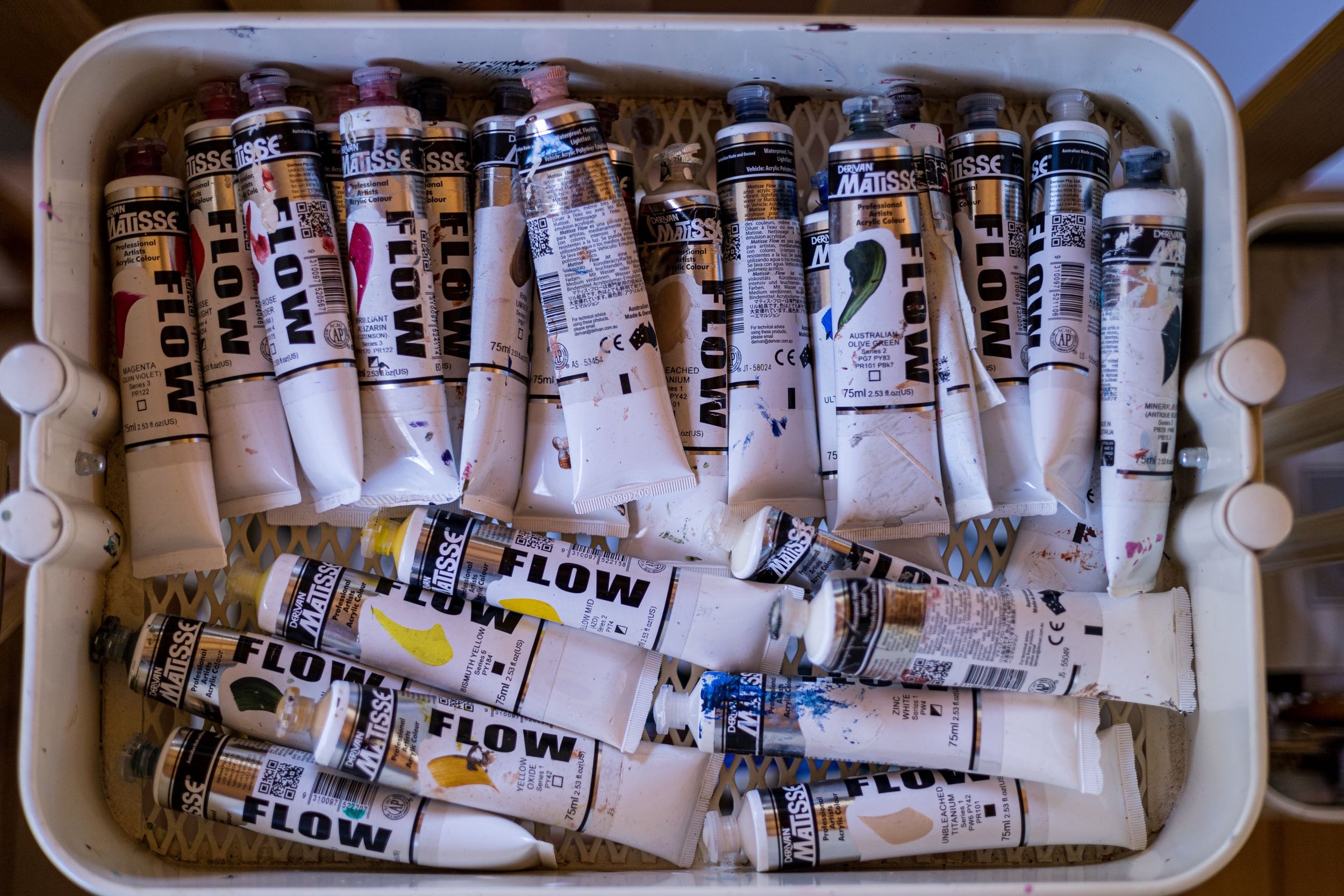
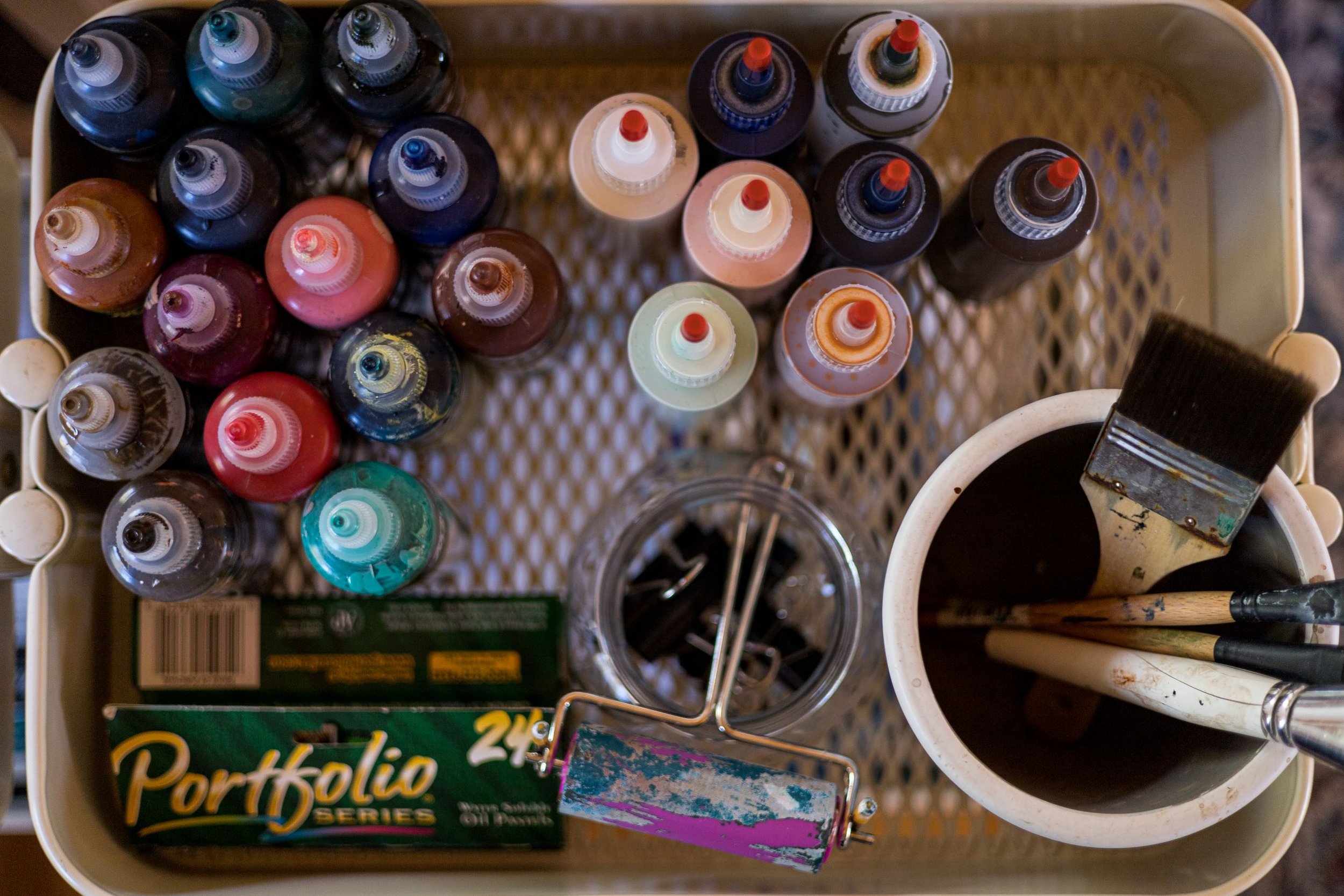
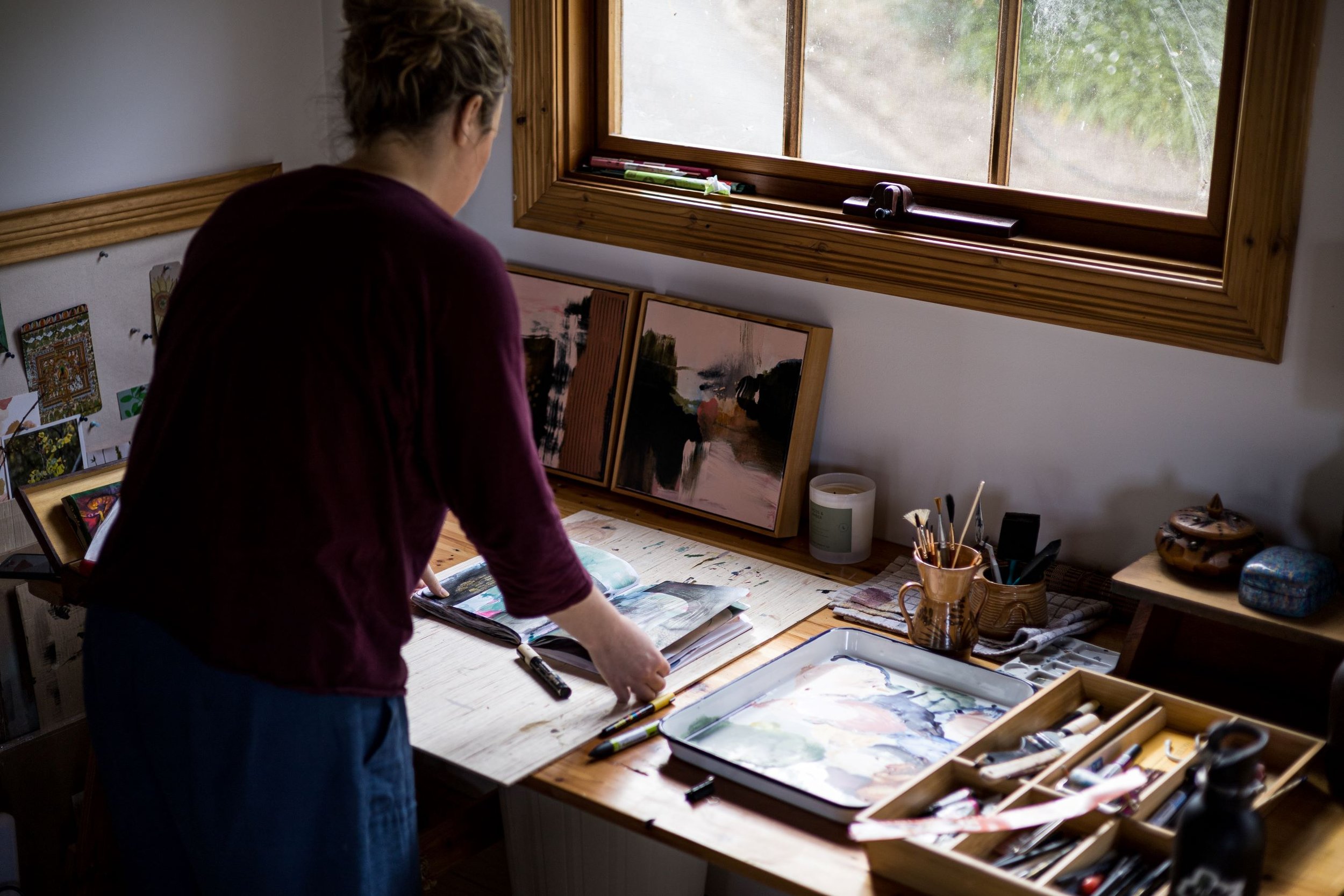
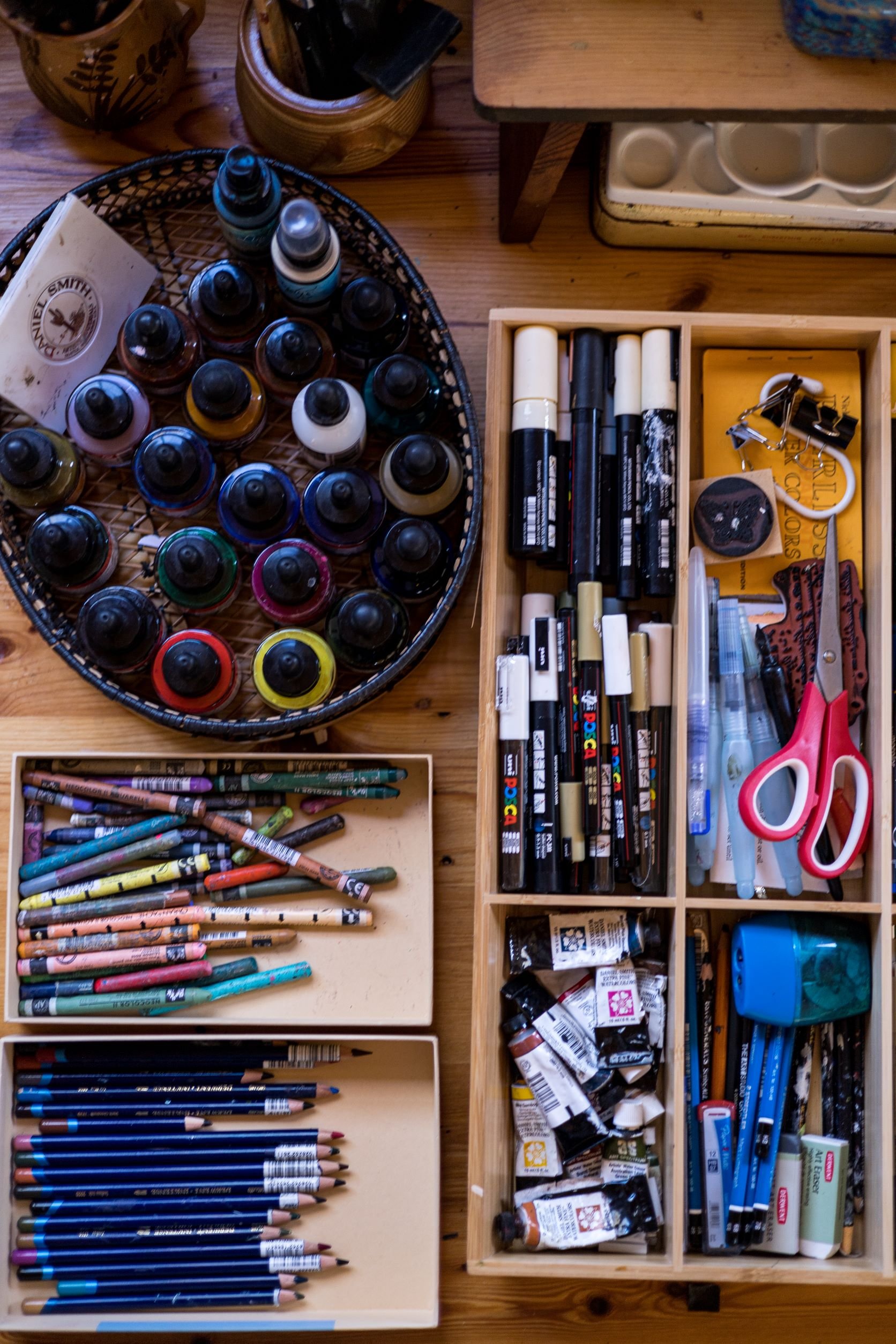
If you don’t have the energy to paint, try something simple like sharpening pencils or sorting out your paints. You never know what this might lead to!
Setting intentions, not goals
We all know that goal setting is important in general, but when it comes to maintaining a creative flow, it might make more sense to focus on intentions instead. Intentions are looser than goals. They provide direction while leaving space for you to follow your intuition. You could choose a colour palette, create a still life, use only one supply, concentrate on mark-making, or set a time limit. Setting an intention will give you a structure to work within and reduce the number of creative decisions that you need to make.
If you try this and still can’t find your flow, you might need to step away and do something else for a while. I always suggest showing up but not forcing it. If you really aren’t feeling it, give yourself permission to take a break. Breaks are important for restoring energy and allowing inspiration to infiltrate. Sometimes you just can’t beat a long walk to reset your creative state.

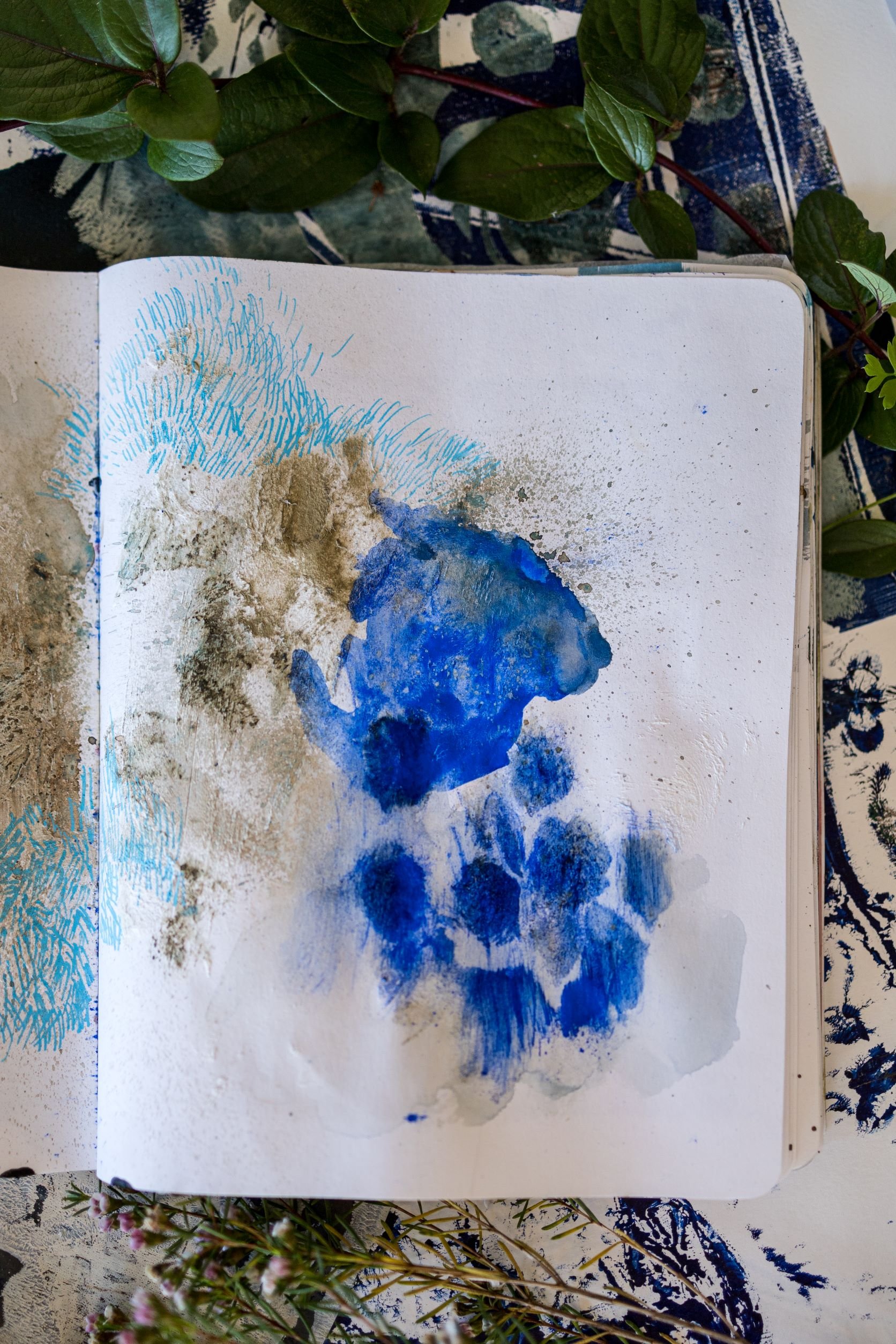
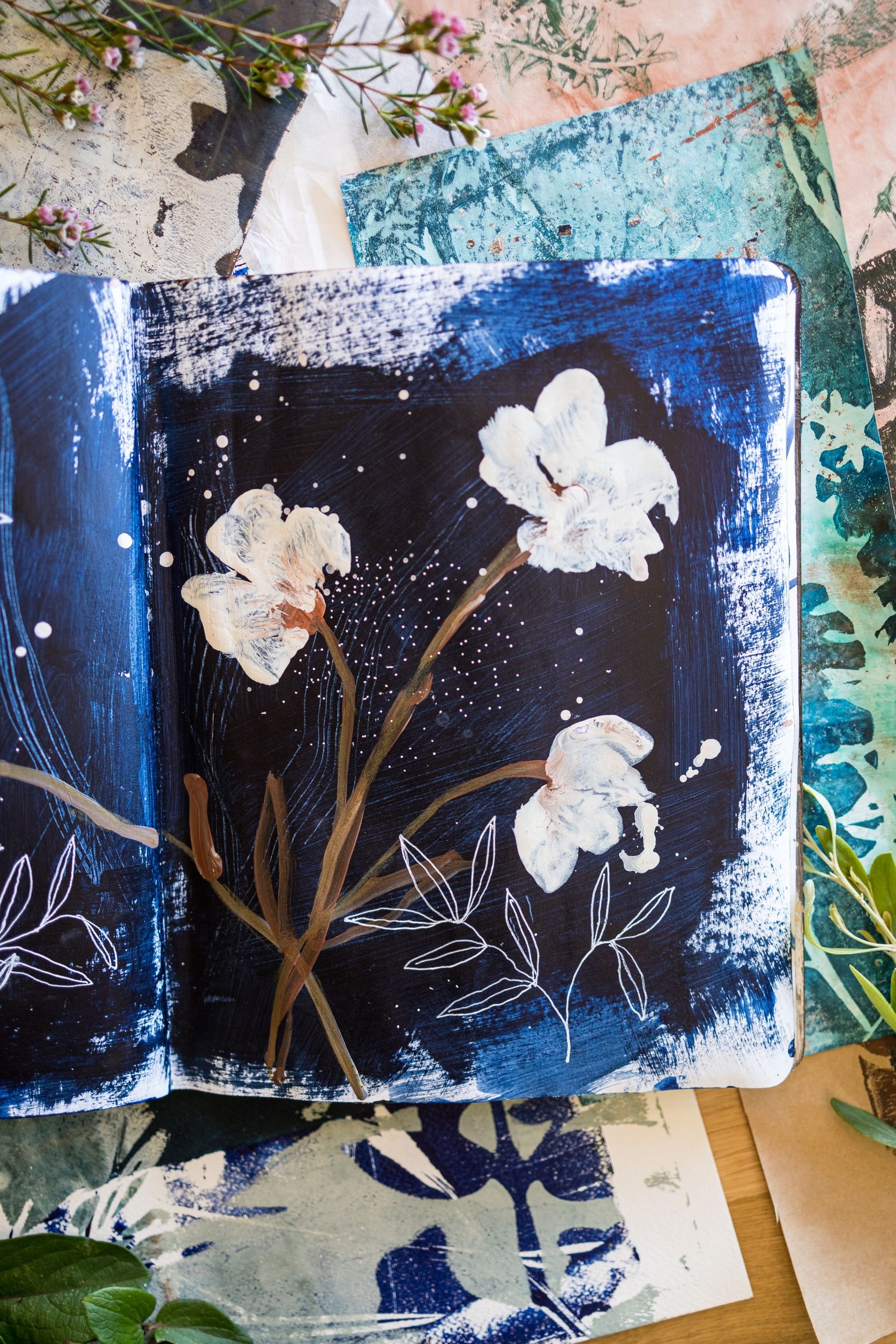
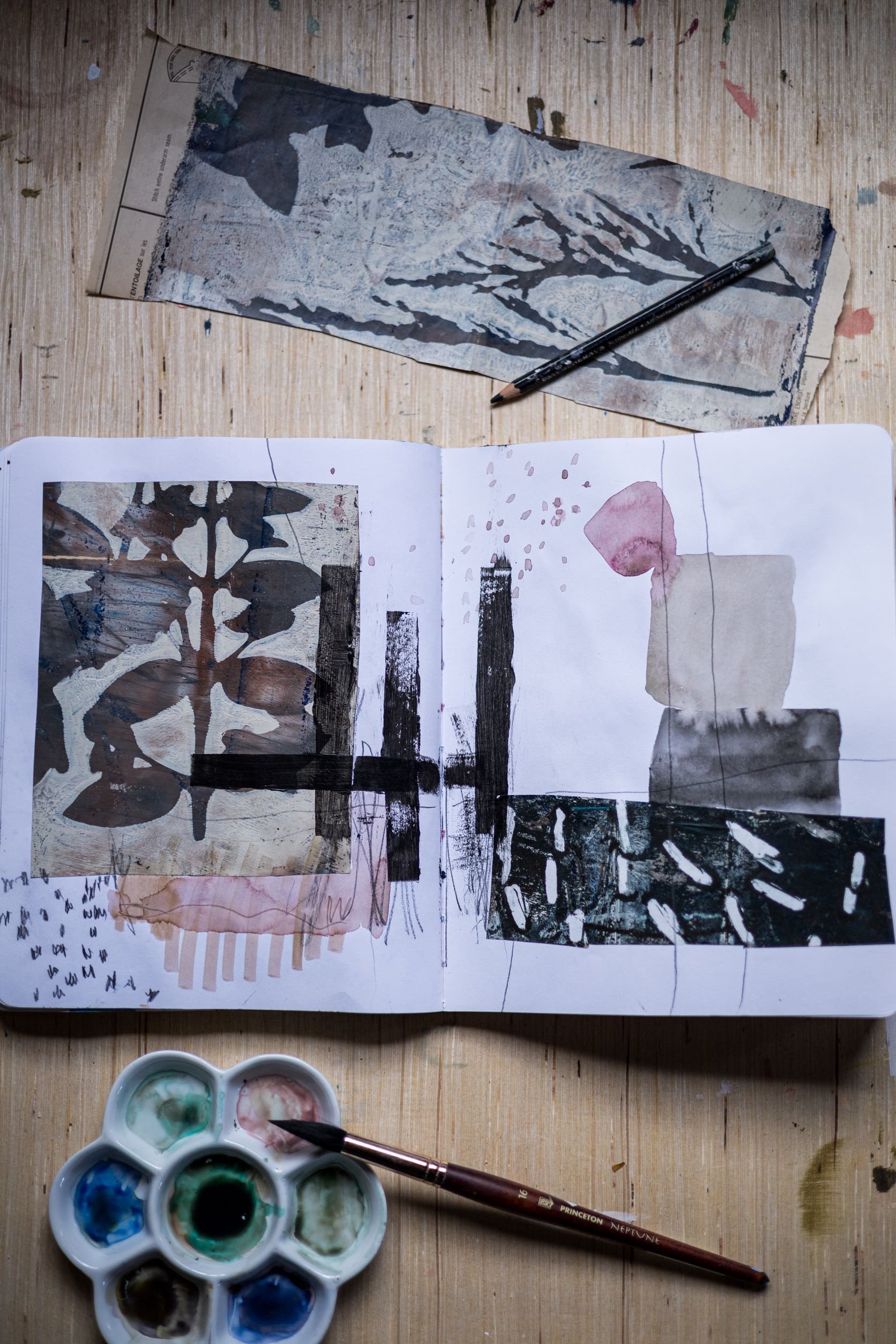
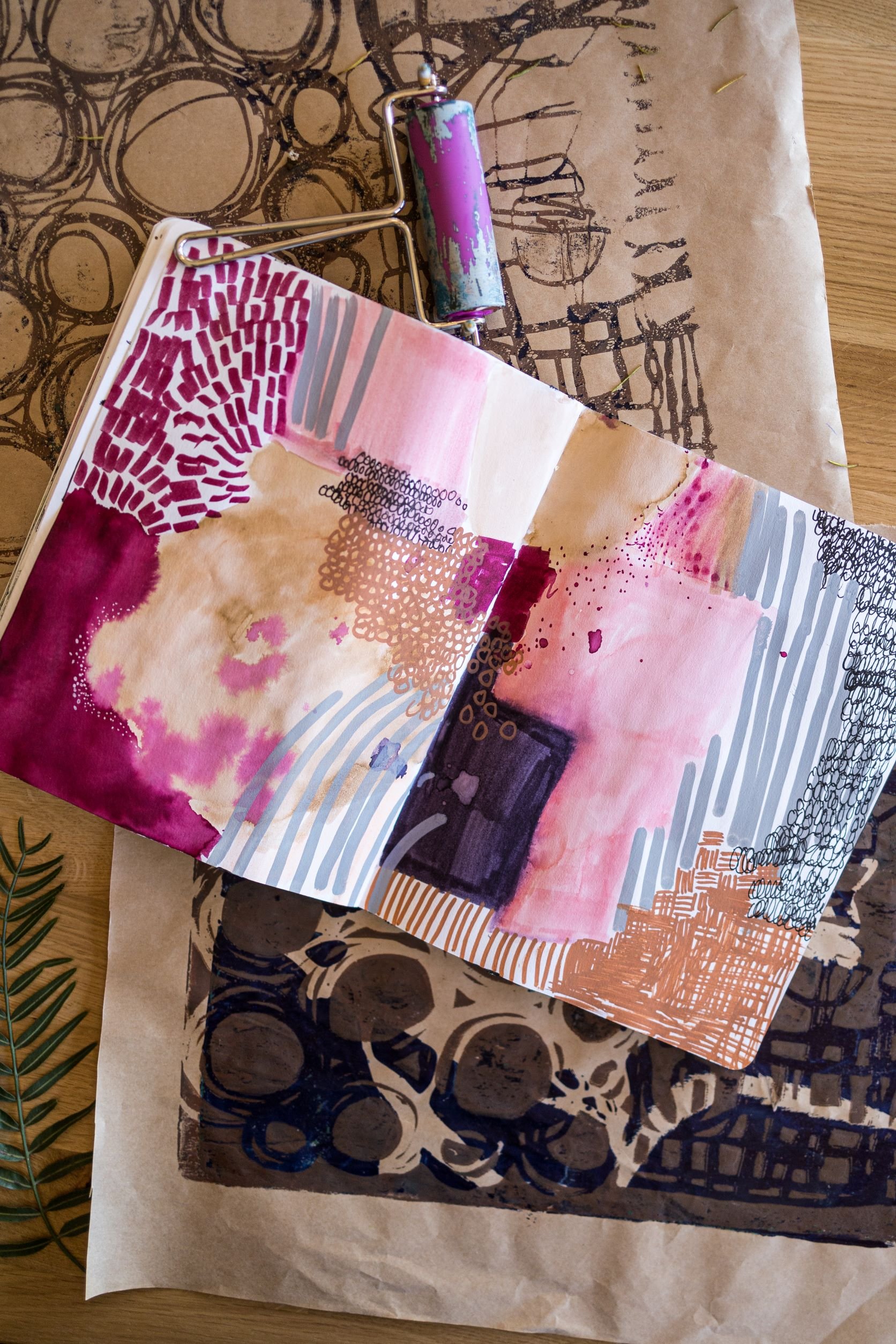

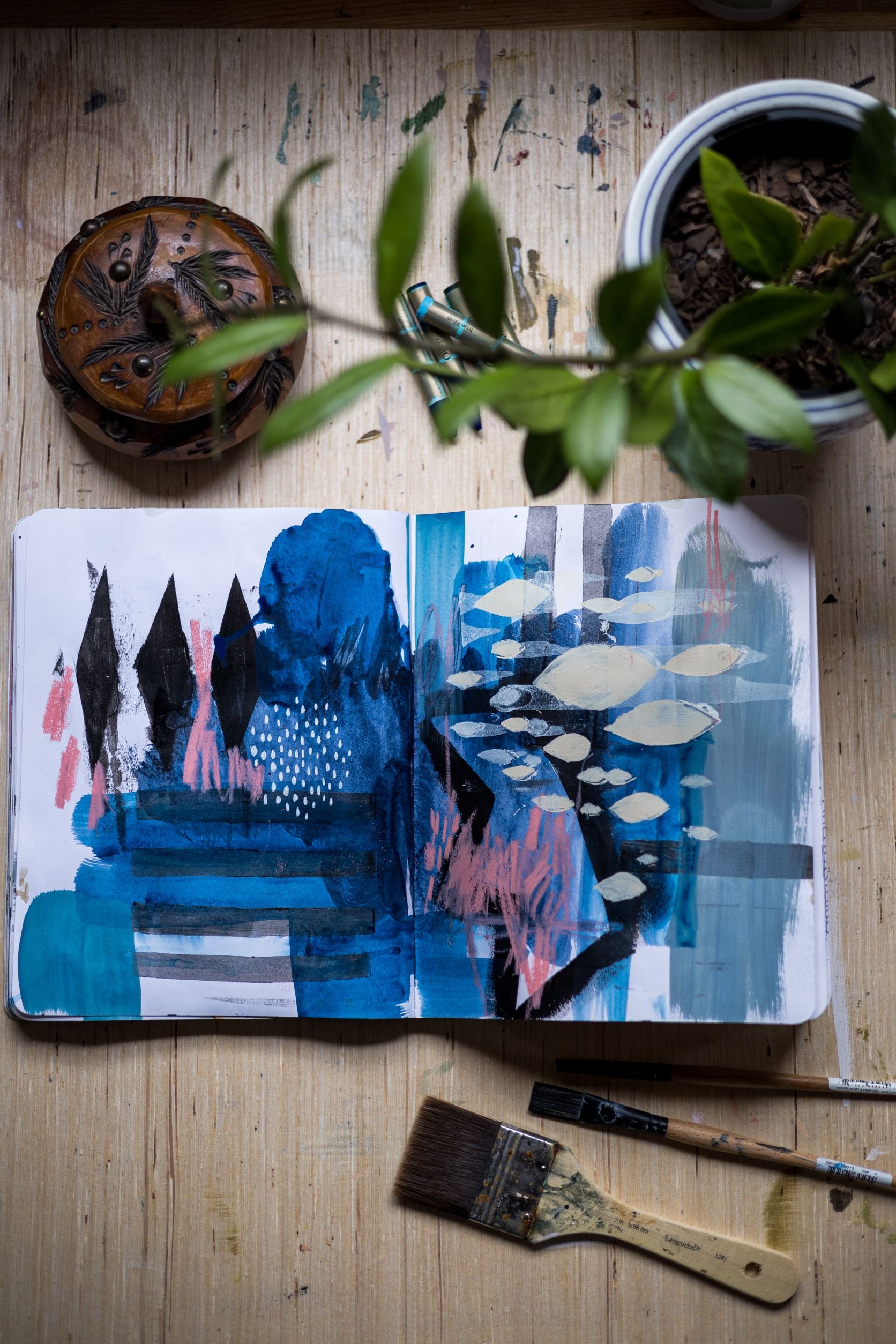
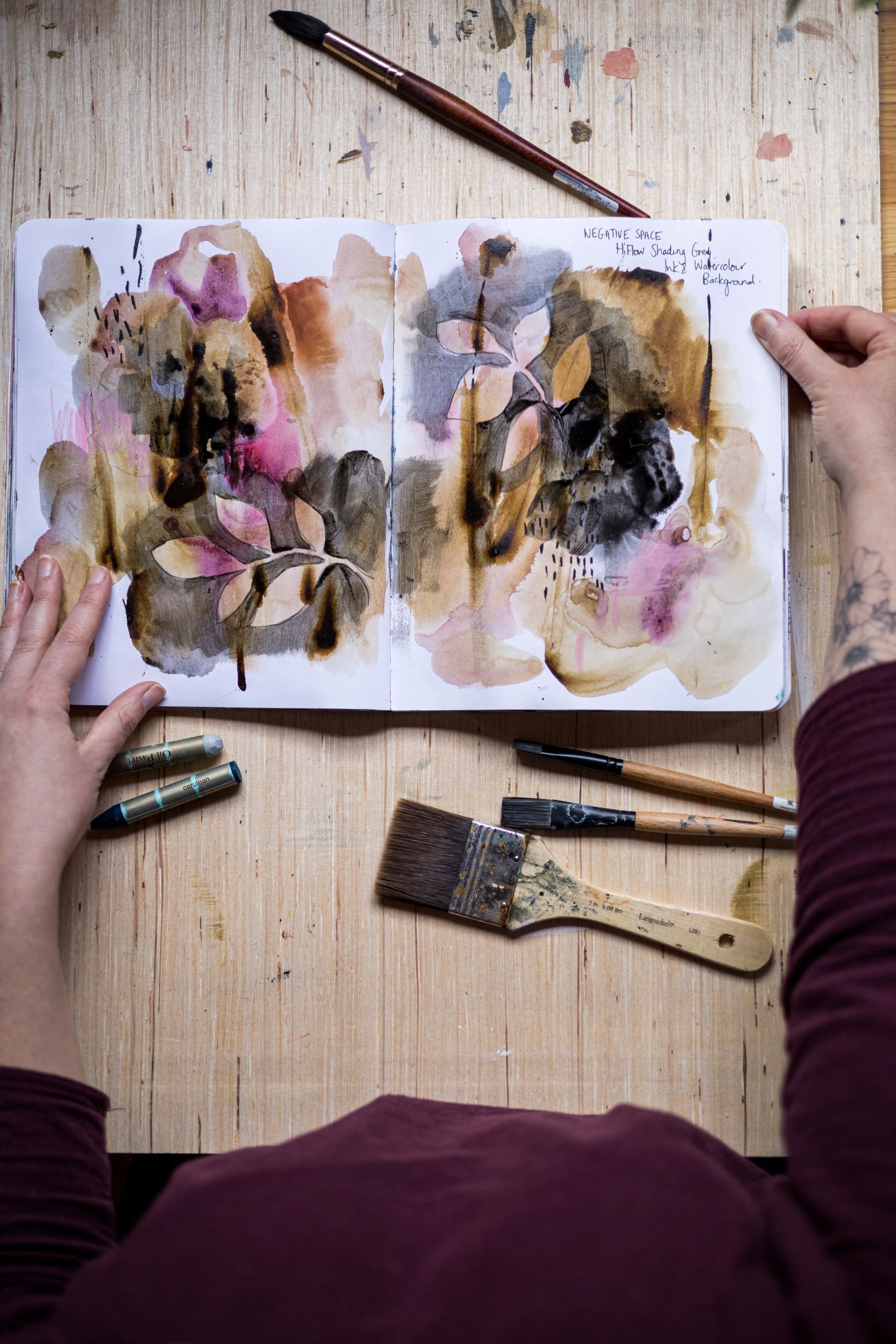
Setting a simple intention for each painting or sketchbook page is a great way to spark ideas.
An attitude of gratitude
You’ve set the scene and created an awesome playlist, prepared your materials, decided what you want to paint, and made a start on creating new work. And those were all important aspects of getting into a great flow. But one thing that will take your creative experience to the next level is to approach every painting with an attitude of gratitude. This practice of actively connecting with your muse in each session brings so much peace and ease to your process.
When it comes to being thankful for a painting or the act of painting, consider how it allows you to learn and grow. Remember that not every painting session will be easy. Some painting sessions will leave you feeling frustrated or lacking in direction. As artists, we have to be able to let go of judgement. When we do this, we can soak up the learning from each painting session. Starting each session with a gratitude practice helps with building this positive mindset.
Repeat, repeat, repeat
You have all these ideas whipping around in your mind of all the things you want to create. But to gain mastery, it pays to linger with an idea for a while. So rather than looking for a new idea, try to go deeper into your existing ideas. When you do this, you will discover subtle variations and nuances in your work.
I just finished filming painting prompt videos for my Painting for Fun Class, and now I'm going back to the beginning and doing each prompt again to learn more.
Repetition helps you to understand your process, making it easier to jump into painting and get started quickly. This isn't about developing a formula. This is about building skills and getting a better understanding of what makes you tick and how you like to work.
I’ve created many sketchbook pages inspired by the prompt ‘Interesting Shapes’! It’s now one of my “go-to” phrases. It helps me to get started and fully embrace abstract experimentation.
A challenge for you!
If you're having trouble deciding whether a piece is finished, speeding up your process and producing a large number of pieces can help. One of the best ways to do this is to commit to a painting challenge and establish a daily habit of making art.
You can do this in your sketchbook, on canvases, loose pieces of paper, or any substrate that you prefer.
As mentioned earlier, it helps to start each painting with an intention. This can be a simple prompt such as muted colours, line-work, shadows, negative space, texture, layers, and so on. Once you have the prompt, approach it in a very free-flowing way, trusting your intuition and giving yourself full permission to play with the concept.
When working in this way, try and stay loose for about 80–90% of the process, then take a break and come back with fresh eyes to add some quick finishing touches. When you are finishing paintings with this speedy mindset, you might find it helpful to ask yourself, “Do I need to add something or take something away?"
You could even set a time limit for finishing to make sure that you don’t get overly fixated on tweaking and making your paintings or sketchbook pages perfect. There’s no need, as you are going to paint another piece tomorrow!
Finishing many pieces is far more valuable than just completing one! Plus, you can always come back to your pieces later.
The key here is to stay loose and in the fun zone. Just go for it!
Want more inspiration?
If you are looking for more tips on how to find your creative mojo, stay loose, and enjoy the painting process, check out my class, Painting for Fun. It includes the 10-prompt sketchbook challenge I mentioned earlier. It’s a brilliant class for anyone that needs a creative boost.
